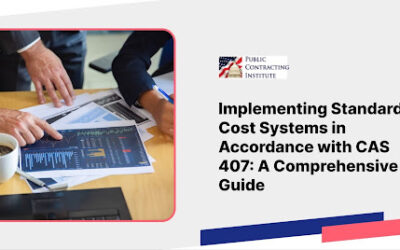Many people in the contracting world, including those in the Congress, have criticized the Lowest Price Technically Acceptable (“LPTA”) method of source selection. The FAR includes a specific section that includes six criteria, all of which must be satisfied when an agency uses an LPTA contract evaluation method for non-DOD procurements. This is discussed below. In Brainerd Helicopters, Inc., d/b/a Firehawk Helicopters, Inc., B420950 et al, Nov. 18, 2022, the Government Accountability Office (“GAO”) considered a protest asserting that LPTA was improper in three helicopter support services solicitations. However, the GAO denied the protest, explaining that the agency had reasonably exercised its judgment in using LPTA.
In Brainerd, the Department of Agriculture (Forest Service) issued solicitations for Indefinite Delivery, Indefinite Quantity (“IDIQ”) contracts for helicopter support services for wildland fire management. Brainerd protested the solicitations asserting that the use of an LPTA contract was not appropriate because the RFPs fail to set uniform minimum requirements for the helicopters sought. Also, the protester challenged the agency’s conclusion that providing superior safety and performance would offer no value to the agency or to personnel involved in fire suppression. And, Brainer asserted that the actual price of each proposal would not be properly determined by the agency.
Below are the six key elements of FAR 15.101-2(c), Lowest price technically acceptable source selection process. Under each element of protest is the GAO basis for denial:
(c) Except for DoD, [] the lowest price technically acceptable source selection process shall only be used when—
- The agency can comprehensively and clearly describe the minimum requirements in terms of performance objectives, measures, and standards that will be used to determine the acceptability of offers;
- GAO: The agency requirements are defined by standards that can be evaluated objectively. The RFPs provide general minimum requirements for all helicopters. The requirements are set forth in terms of specific requirements and standards for each type of helicopters sought. And the agency may provide for additional specific metrics for use in task order solicitation. The protester simply disagreed with the agency’s judgment.
- The agency would realize no, or minimal, value from a proposal that exceeds the minimum technical or performance requirements;
- GAO: The protester argued that because of “extreme safety risks” the agency, public and firefighters would benefit from a contractor’s exceeding the minimum requirements. GAO saw no merit in the contention that offering additional payload capabilities would provide additional benefits. Historical data shows that the agency’s use of different payload categories substantiated the agency’s needs in current procurements Again, the protester merely asserted a disagreement with agency judgment. Further, the GAO agreed that there was no way to quantify how providing additional safety management measures beyond those established by the Federal Aviation Administration (which are required by the RFPs) would provide benefits.
(3) The agency believes the technical proposals will require no, or minimal, subjective judgment by the source selection authority as to the desirability of one offeror’s proposal versus a competing proposal;
(4) The agency has a high degree of confidence that reviewing the technical proposals of all offerors would not result in the identification of characteristics that could provide value or benefit to the agency;
- Brainerd also argued that the agency should have taken past performance into account as an evaluation factor, but the GAO found that because of the high standards of technical performance and the controlled operating environment, differentiating between greater than acceptable levels of performance would offer little or not benefit to the agency.
(5) The agency determined that the lowest price reflects the total cost, including operation and support, of the product(s) or service(s) being acquired; and
- Brainerd objected to the price determination methodology. The GAO found the agency method reasonable because the solicitations properly took into account the three different types of helicopters to be procured, and each of the RFPs factored in additional relevant price components (including payload category estimates as well as other cost estimates). These are the relevant performance elements to reasonably determine price.
(6) The contracting officer documents the contract file describing the circumstances that justify the use of the lowest price technically acceptable source selection process.
GAO concluded that the Department of Agriculture had reasonably decided to use the LPTA evaluation method to meet its requirement.
Takeaway. The GAO will find the use of an LPTA contract reasonable in non-DOD procurements where the agency can demonstrate a reasonable basis and a compliance with FAR 15.101-2(c), the lowest price technically acceptable source selection process.
For other helpful suggestions on government contracting, visit:
Richard D. Lieberman’s FAR Consulting & Training at https://www.richarddlieberman.com/, and Mistakes in Government Contracting at https://richarddlieberman.wixsite.com/mistakes.


